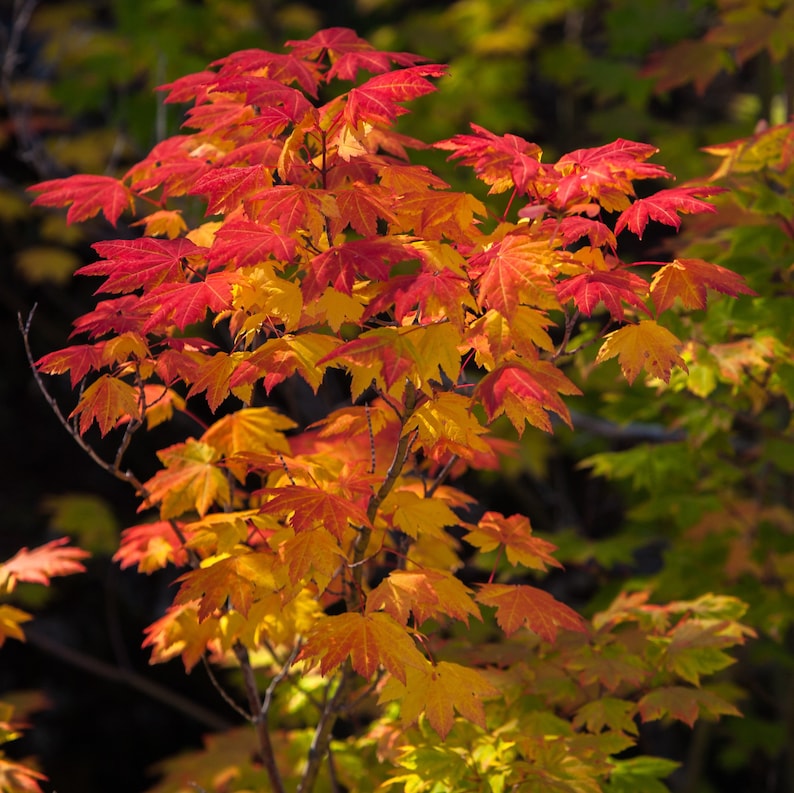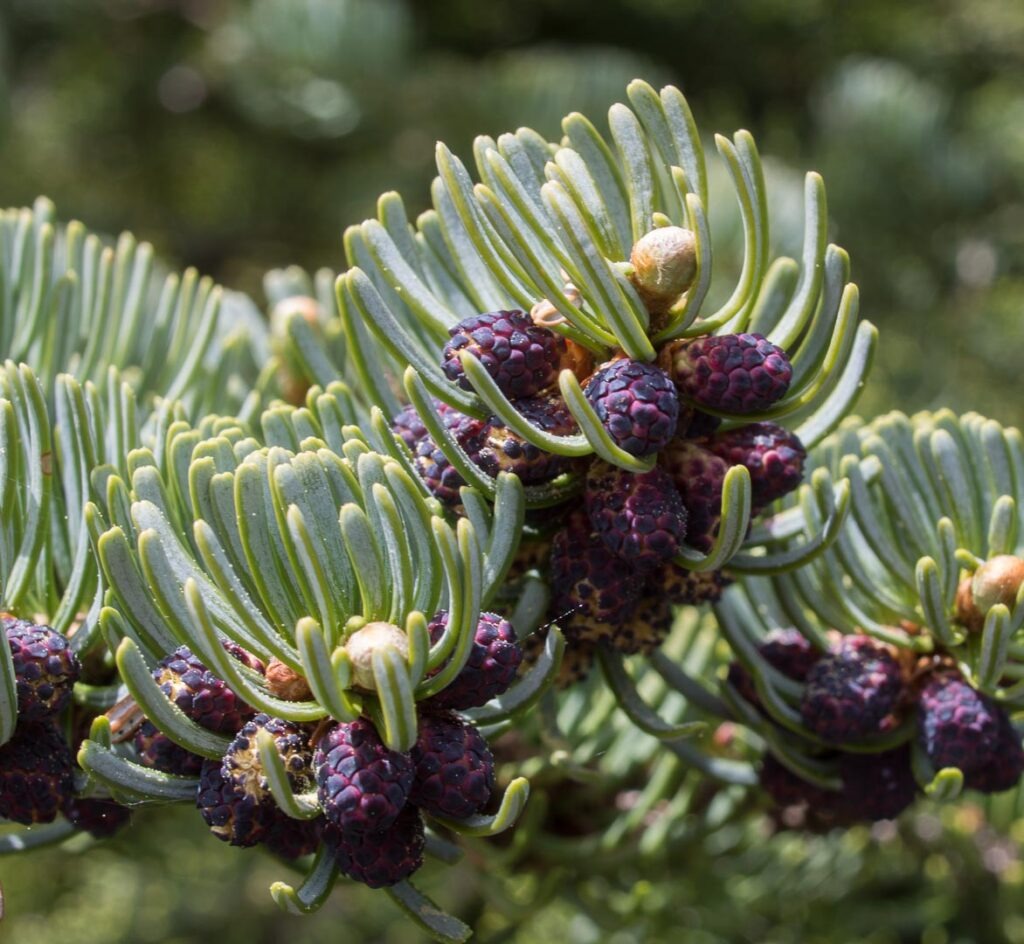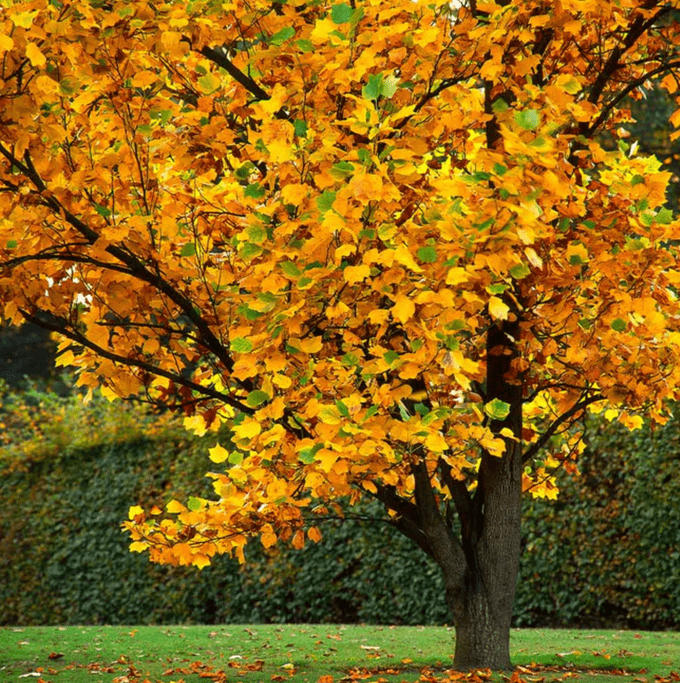Koelreuteria paniculata
Koelreuteria paniculata, pronounced coal-rue-terry-uh pan-ick-you-lah-ta is a fun one to say once you get the hang of it. The common name, golden rain tree is certainly more dreamy though. Your first sight of a fully mature golden rain tree at the peak of its bloom cycle is certainly dream worthy. Covered in bursts of gold, these trees will take you from an ordinary landscape to the best time you ever had dancing under a disco ball. Not only for you but for the pollinators too. Hummingbirds, butterflies and bees will all make appearances on the dance floor of your golden rain tree, and be sure to tell all their friends about it.
Once mature, the blooms on this tree can be seen from blocks away. Which is great for us and great for the bees! The large panicles of golden blooms can grow as large as 16 inches long by about 12 inches wide, with hundreds of blooms on each panicle! The first flowers to open are all male flowers, then the female flowers to follow. This is where the pollinators come in. After successful pollination, the flowers will then turn into groovy little inflated seed pods that resemble a Chinese lantern.
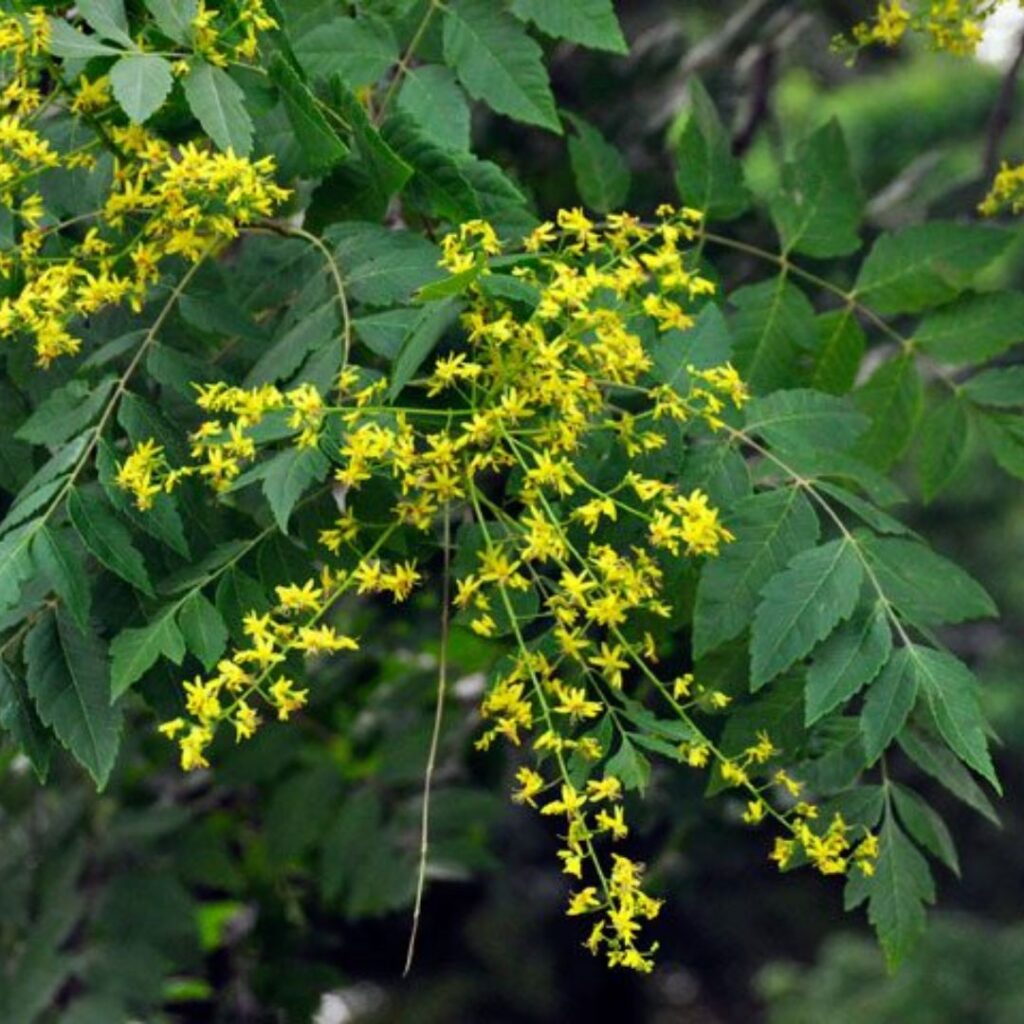
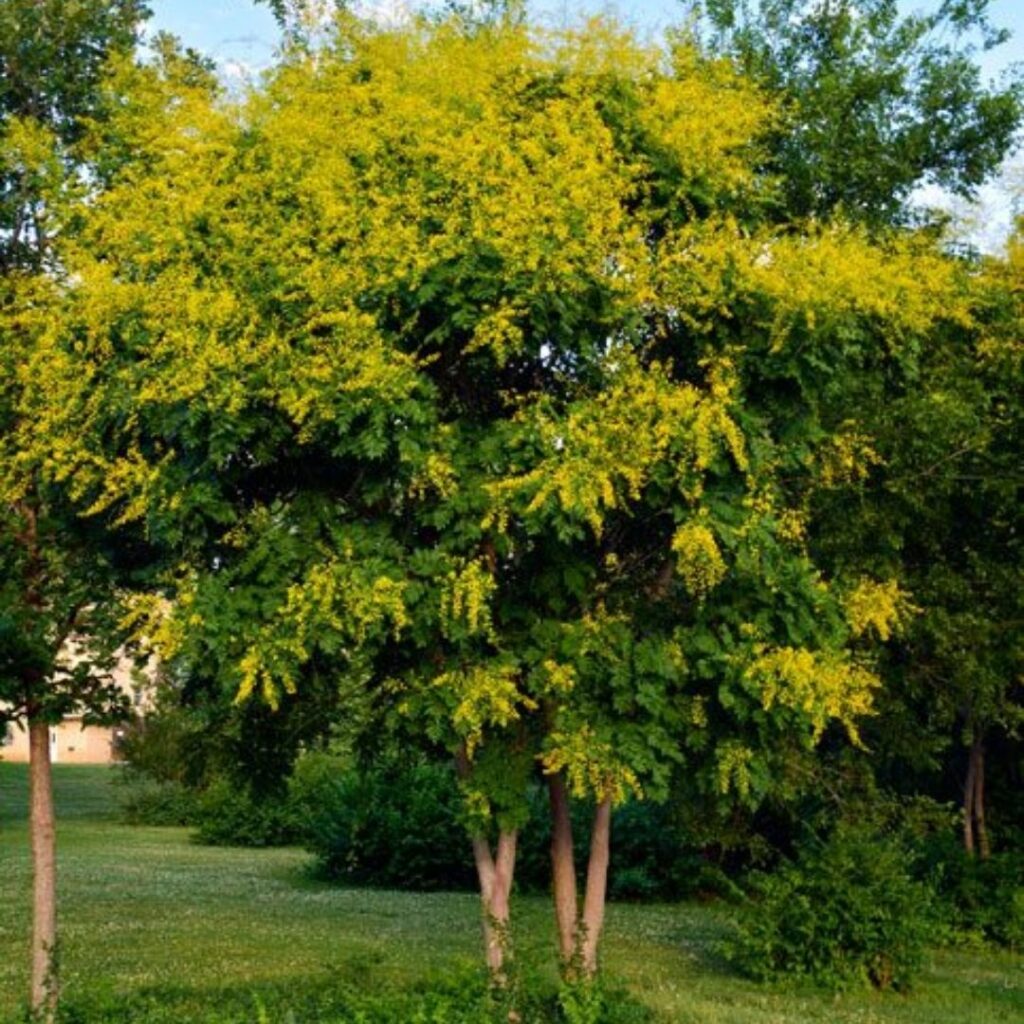
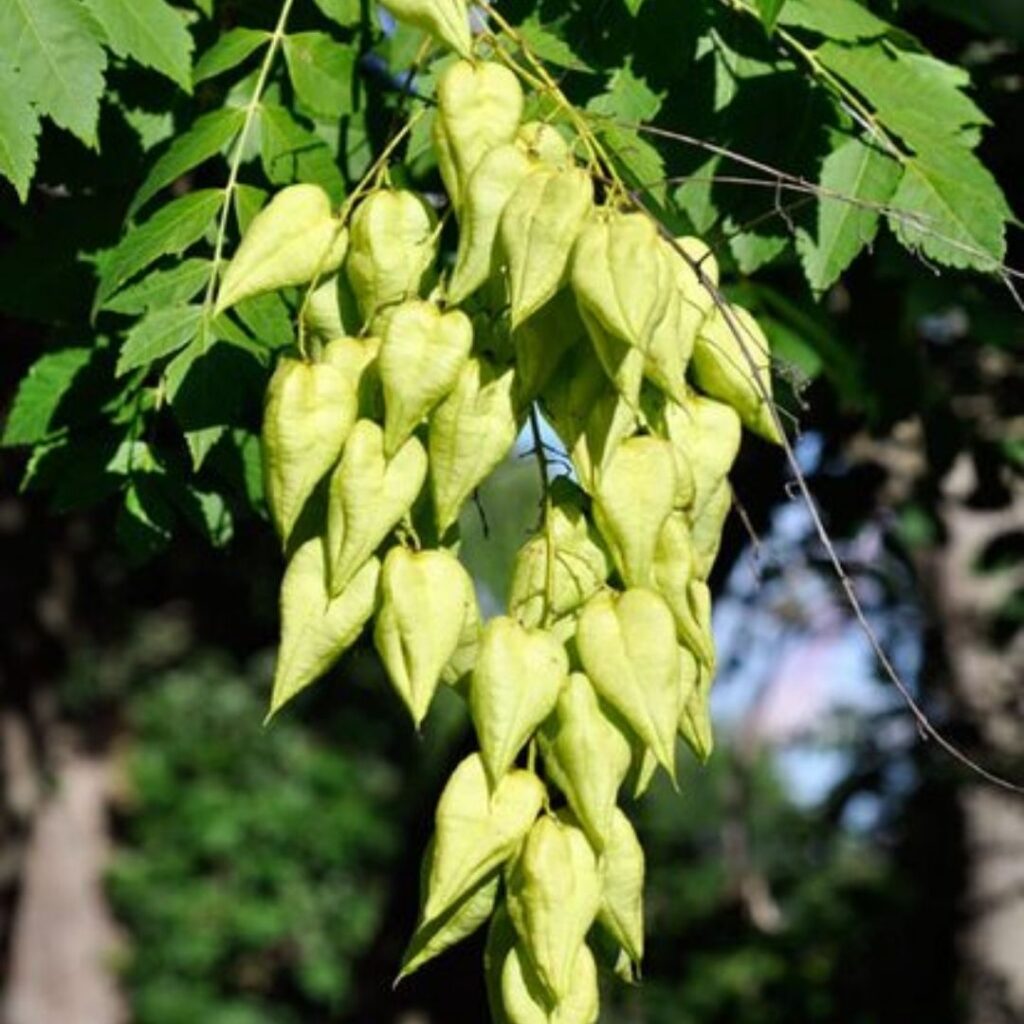
To tell you the truth, the golden rain tree is technically an invasive tree. That’s right, the Koelreuteria paniculata was introduced into our North American flora by none other than our third president, Thomas Jefferson. Well, sort of anyway. In the round-a-bout way we Bendites know and love. The golden rain tree originally made it’s way from Beijing to Germany in the care of a French priest with an enthusiasm for horticulture. The disinterested botanists who received the seeds however, proceeded to set them on a shelf and ignore them for the better part of 20 years! Then in 1771 the shriveled-up plant material was examined, the seeds were planted, and lo and behold they actually germinated! The tree was then named after a German botanist Joseph Koelreuter who had uniquely dedicated his research career to plant hybridization. At some point, and for reasons unknown, Madame de Tesse, who was a correspondent from France decided to send some seeds to our President.
Perhaps the grit it took the seeds to remain viable after being forgotten for 20 years is what makes these trees so tough. They tolerate drought, heat and even air pollution. They also manage limited (but well-draining) root space. For these reasons over the years, they have been making their way onto many of the approved street tree and drought tolerant lists for cities in zones 5-9. The golden rain tree gets about 25 feet tall and wide making it a nice summer screen in your yard. Perhaps you’ve noticed a few of them as you float past the homes along the river across from Drake park. Once in bloom, mid-summer, they sure are hard to miss.

